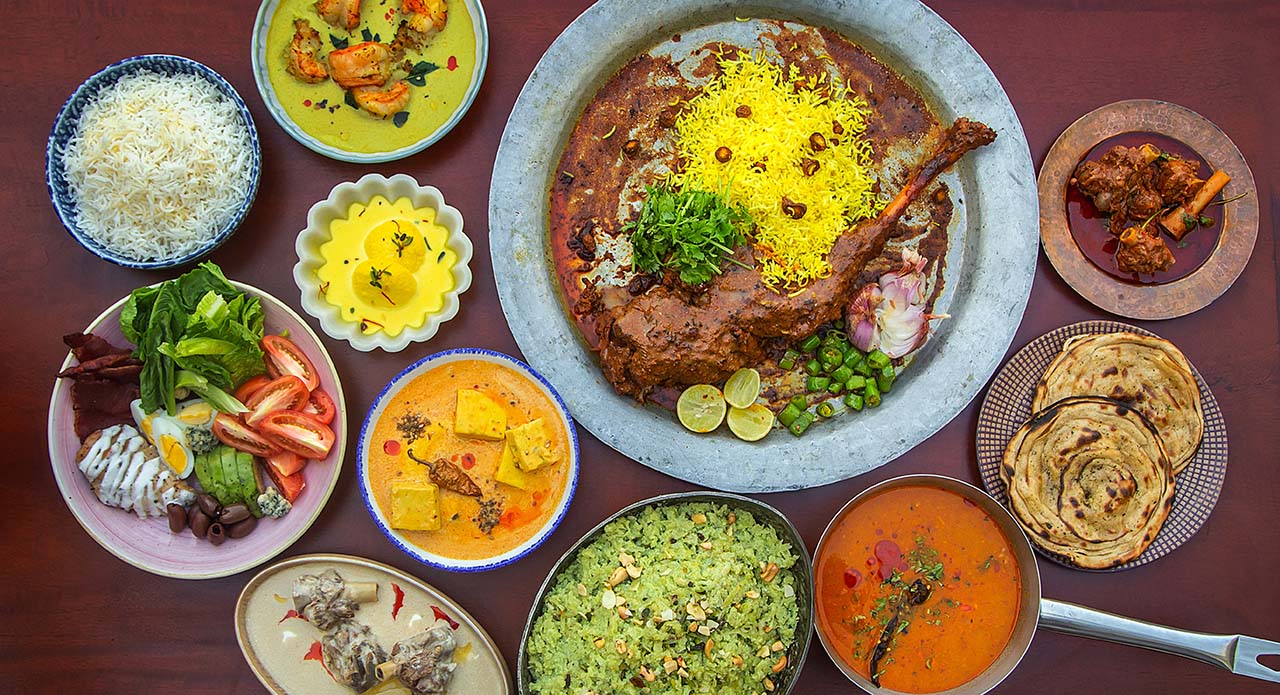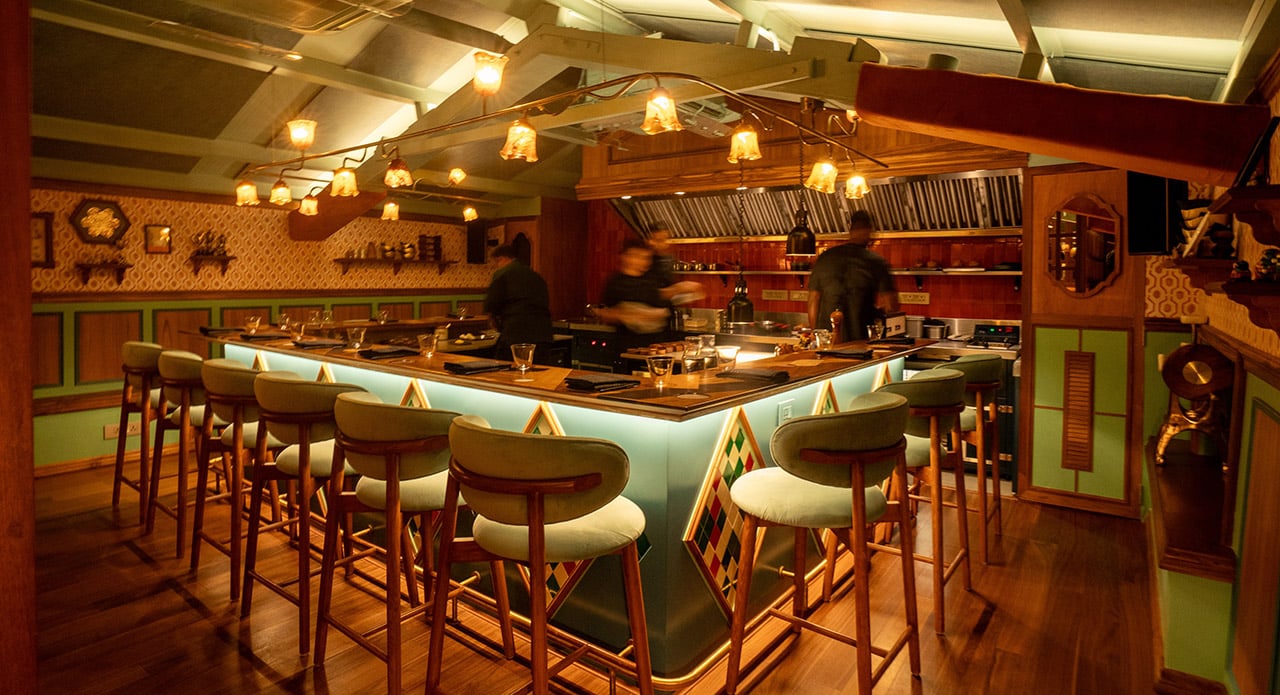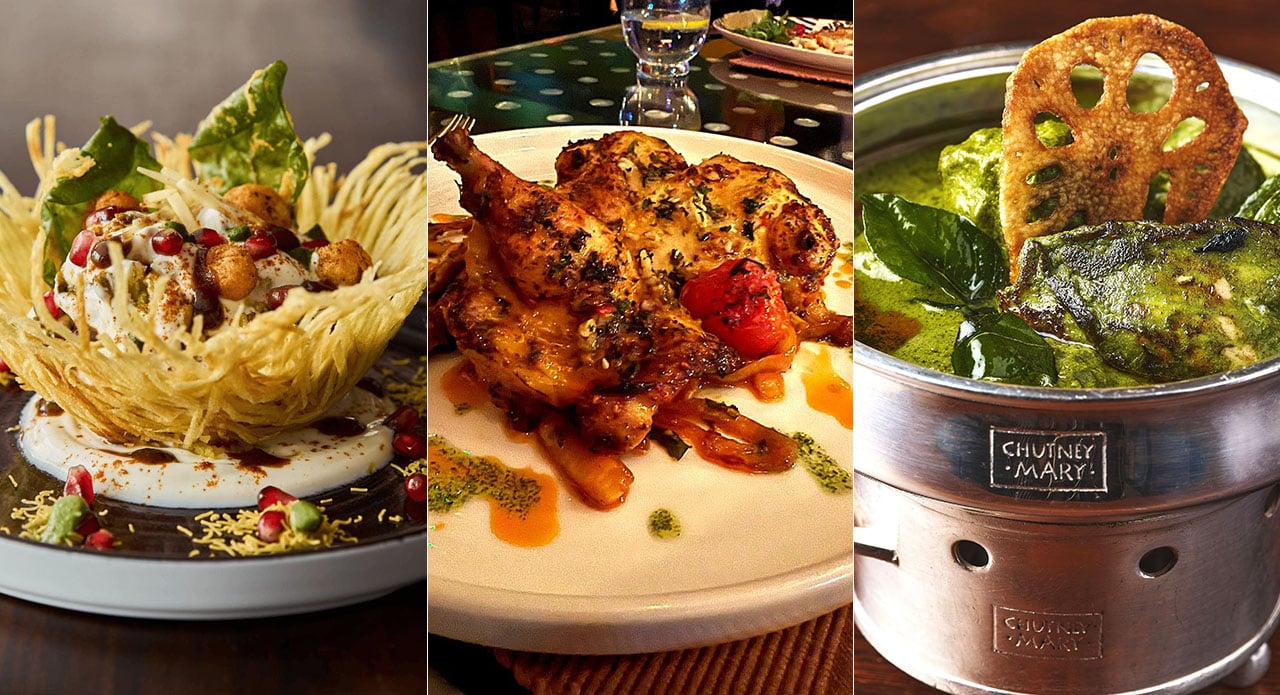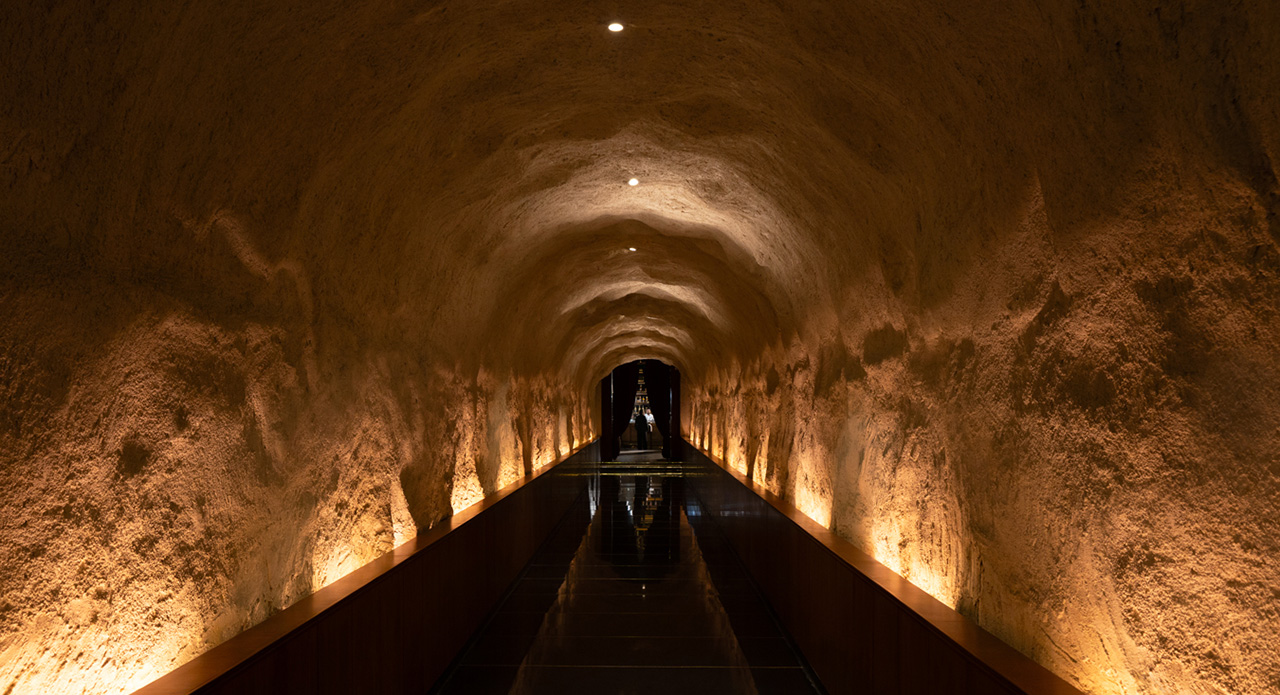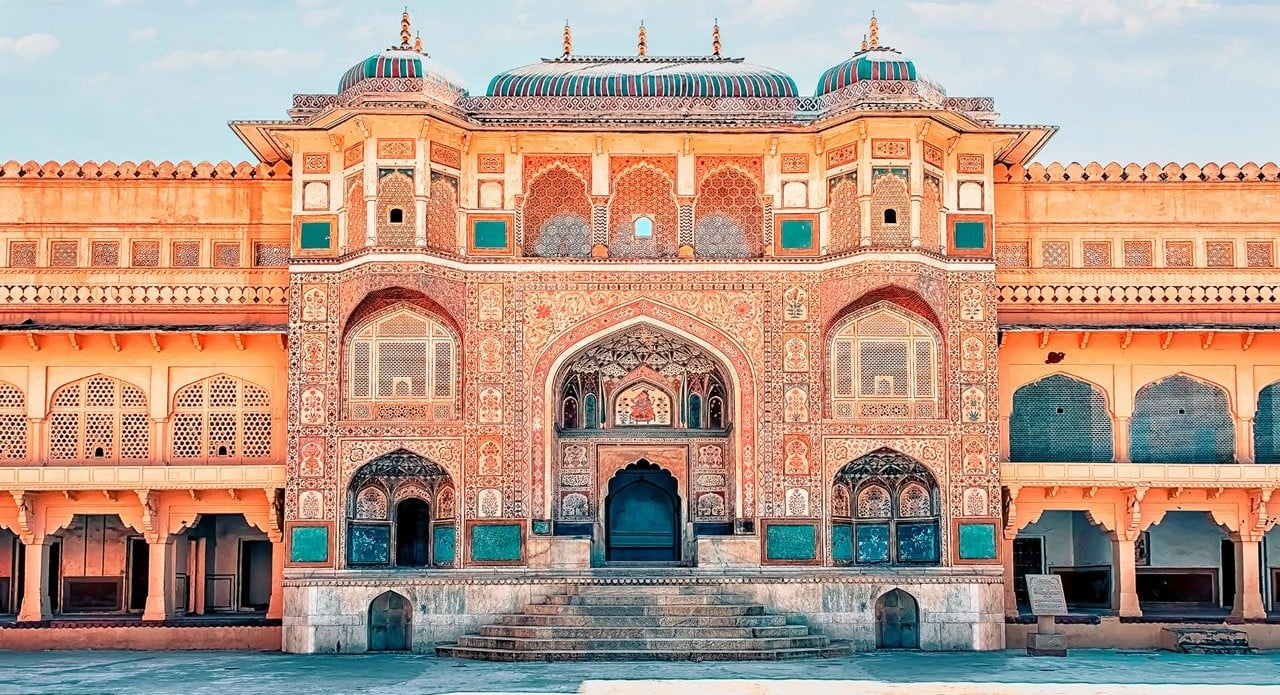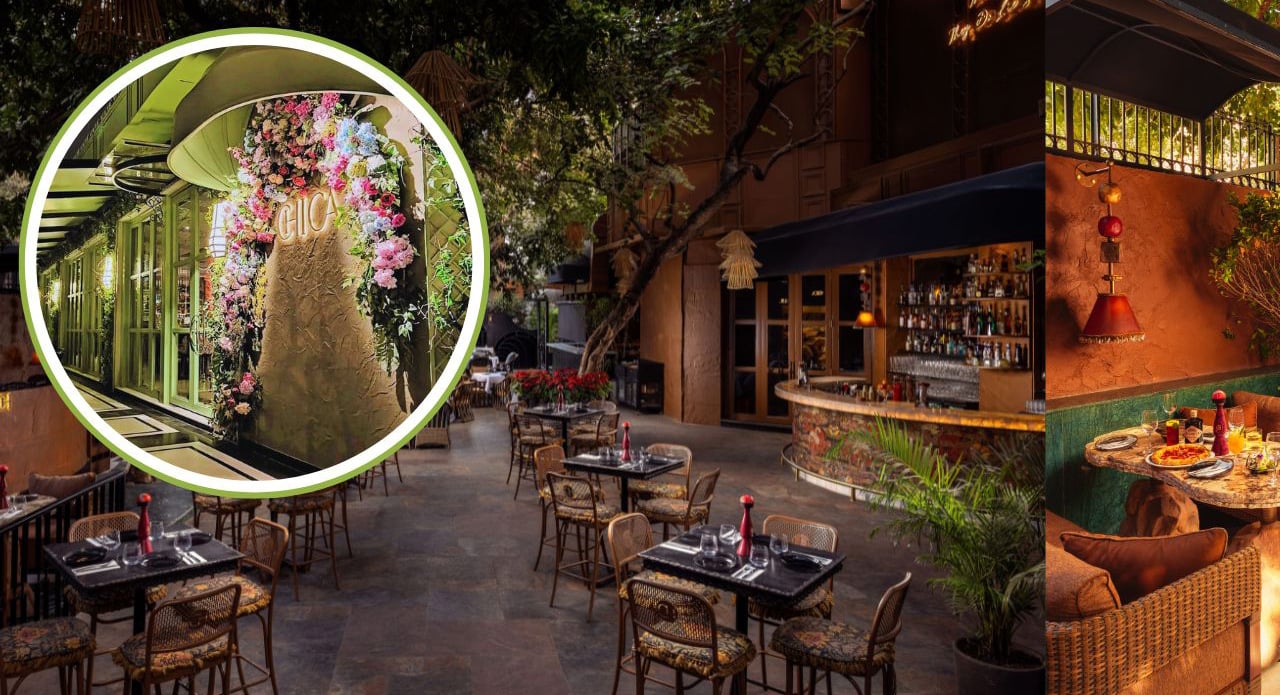On a recent trip to Jaipur, I arrived to find the Pink City cloaked in thick, monsoon air — the kind that lingers heavily on the skin, curls your hair at the edges and softens the ochre walls into muted pastels. Rajasthan in the rains has always held a special pull for me. The desert turns green in brief, lush bursts; the bougainvillea seem brighter against grey skies; and the forts, with their rain-slicked stones, feel almost cinematic. It is a fleeting season, but one I return to each year — a time when the heat retreats, the colours deepen and the city breathes with a kind of quiet joy.
This time, however, my visit wasn’t only about chasing monsoon romance through misty Aravalli landscapes or tracing the contours of old havelis. I had been hearing of something else simmering quietly in the city — a culinary reawakening that was beginning to stir conversations far beyond Rajasthan’s borders. Chefs I admired had mentioned it in passing; friends from Delhi returned raving about meals that felt both unfamiliar and deeply rooted. The whispers were clear: Rajasthani cuisine, long reduced in the national imagination to lal maas and gatte ki sabzi, was being reconsidered, reimagined and respectfully revived — not in loud, dramatic reinventions, but in thoughtful, almost reverent ways.

My journey began at the Hyatt Regency Jaipur Mansarovar, a haveli-inspired property on the city’s outskirts that surprises you with its intimate scale and design. With jharokhas, domed ceilings and delicate sandstone jaalis, the hotel blends seamlessly into its Rajasthani setting, far removed from the expected glass-and-steel silhouette of the global brand. While the venue has all the makings of a modern-day destination wedding favourite, what struck me most wasn’t the decor — it was the quiet revolution unfolding in its kitchen.
At Shrot, the hotel’s all-day dining restaurant, Chef Shibendu Ray Chaudhury is championing a menu that looks inwards rather than outwards. There is no lal maas here — a surprising, even risky, omission in a region where tourists often expect that singular shorthand for Rajasthani cuisine. Instead, the menu draws from hyper-local micro cuisines, from recipes passed down in family kitchens to techniques rarely used outside rural homes: pit-fire cooking, slow fermentation, single-pot meals and tempering with clay shards. When our meal arrived — a comforting bowl of Thikri Dal paired with Pratapdhan Chicken and fresh rotis — it felt more like an offering than a presentation. The dal, a humble toor preparation infused with the smokiness of heated earthen shards (thikri), was as soulful as it was simple. The chicken, gamey and bold in flavour, came from a native Rajasthani breed and was cooked with restraint, allowing the inherent depth of the meat to shine.
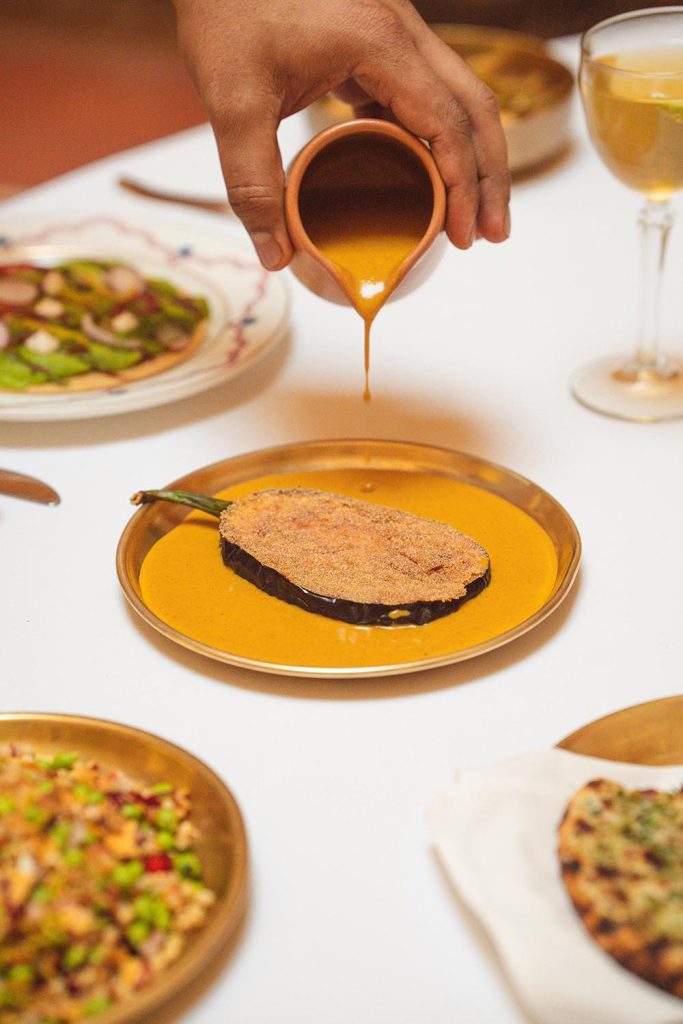
Later, as we sat under a soft light with the rain tapping against the windows, Chef Ray Chaudhury shared his vision: “Our philosophy centres on rediscovering the richness of India’s culinary heritage. We travelled through villages, learning from homes that don’t measure or write recipes down — just memory and intuition. We wanted to honour that.”
That spirit of respectful exploration echoed elsewhere in the city. At the newly opened Anantara Jewel Bagh, where the global brand made its India debut, I found another iteration of this movement — one that straddled heritage and innovation. Designed with weddings in mind, the property still manages to offer a dining experience that feels personal and precise. At Sheesh Mahal, their mirror-clad signature restaurant, Chef Sunil Jajoria and his team prepared a tasting menu that was at once traditional and inventive: smoky besan ke kababs that mimicked galawati in texture, millet rotis served with house-churned butter, and even a whimsical sev hummus that referenced Rajasthan’s love for namkeen with an unexpected twist.

But perhaps the most compelling expression of this culinary shift came at The Johri, a 19th-century haveli tucked inside the tangled lanes of the old walled city. Owned by the Kasliwal family of The Gem Palace, the five-suite property is as much an architectural restoration as it is a hospitality gem. Its restaurant, entirely vegetarian, is helmed by Chef Vikram Arora and executed by Chef Sonu Singh under the thoughtful guidance of Abhishek Honawar, who also leads the property’s overarching vision. Here, dishes like crispy avocado chaat on khakra, edamame-matar seekh and kathal ki nihari tell stories that stretch across geography and time — rooted in Indian sensibilities but styled with a global lens.
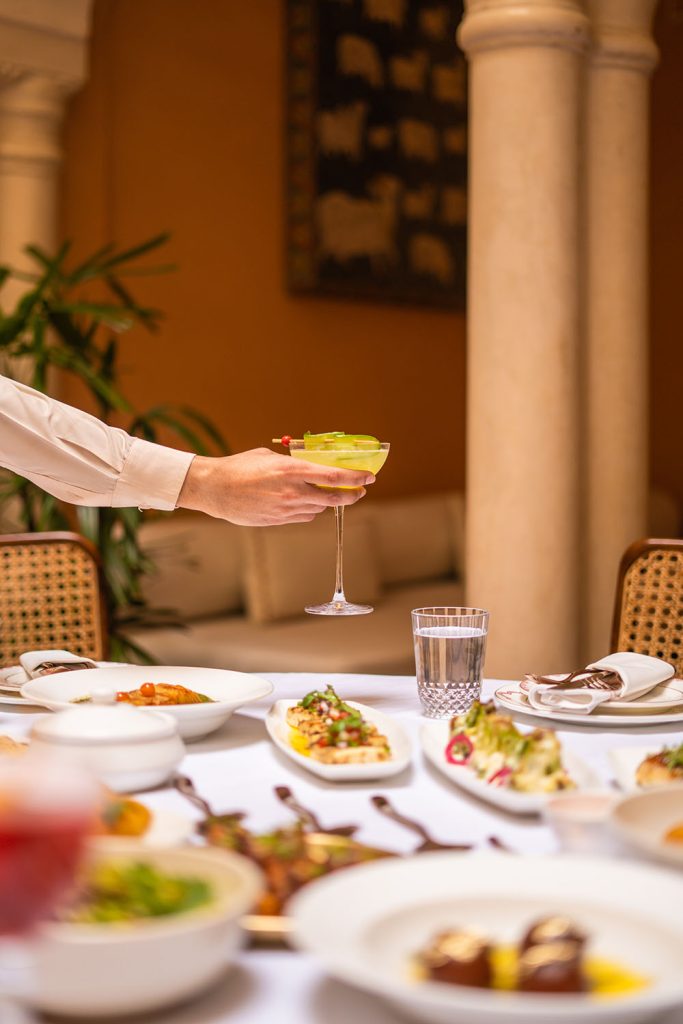
“I don’t feel particularly weighed down by nostalgia,” Honawar told me when I asked how history and modernity co-exist on the plate. “But I do want diners to feel something when they eat — and nostalgia is often part of that. What we’ve done at The Johri is recreate the luxeness of Indian cuisine, without the heaviness.”
And indeed, there are no overstuffed thalis here, no decadent gravies that sit heavy on the stomach. Instead, there’s nuance — in texture, in plating, and in the cocktails that accompany each course, which have helped earn the restaurant a spot on the list of India’s top 50.
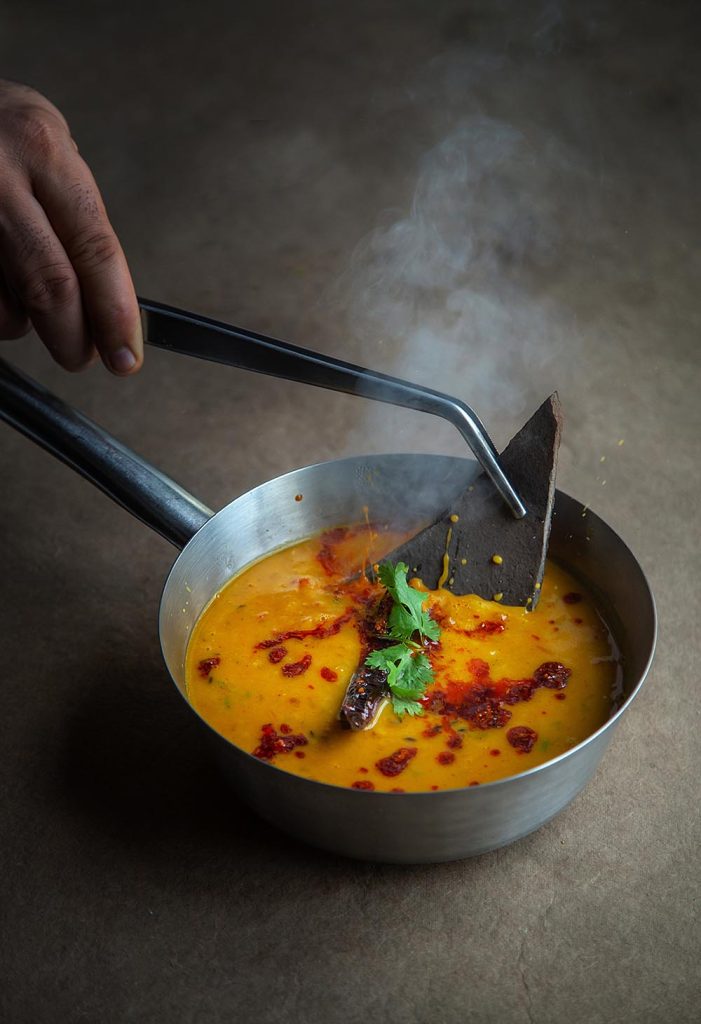
What became evident through these meals was that something subtle but significant is shifting. Rajasthani food is no longer being treated as a monolithic cuisine to be dusted off for tourist nostalgia. Instead, it is being honoured — through research, restraint and remarkable imagination — by chefs who know that heritage isn’t static, but living. And the most luxurious expression of that might just be a bowl of dal that tastes like home.
